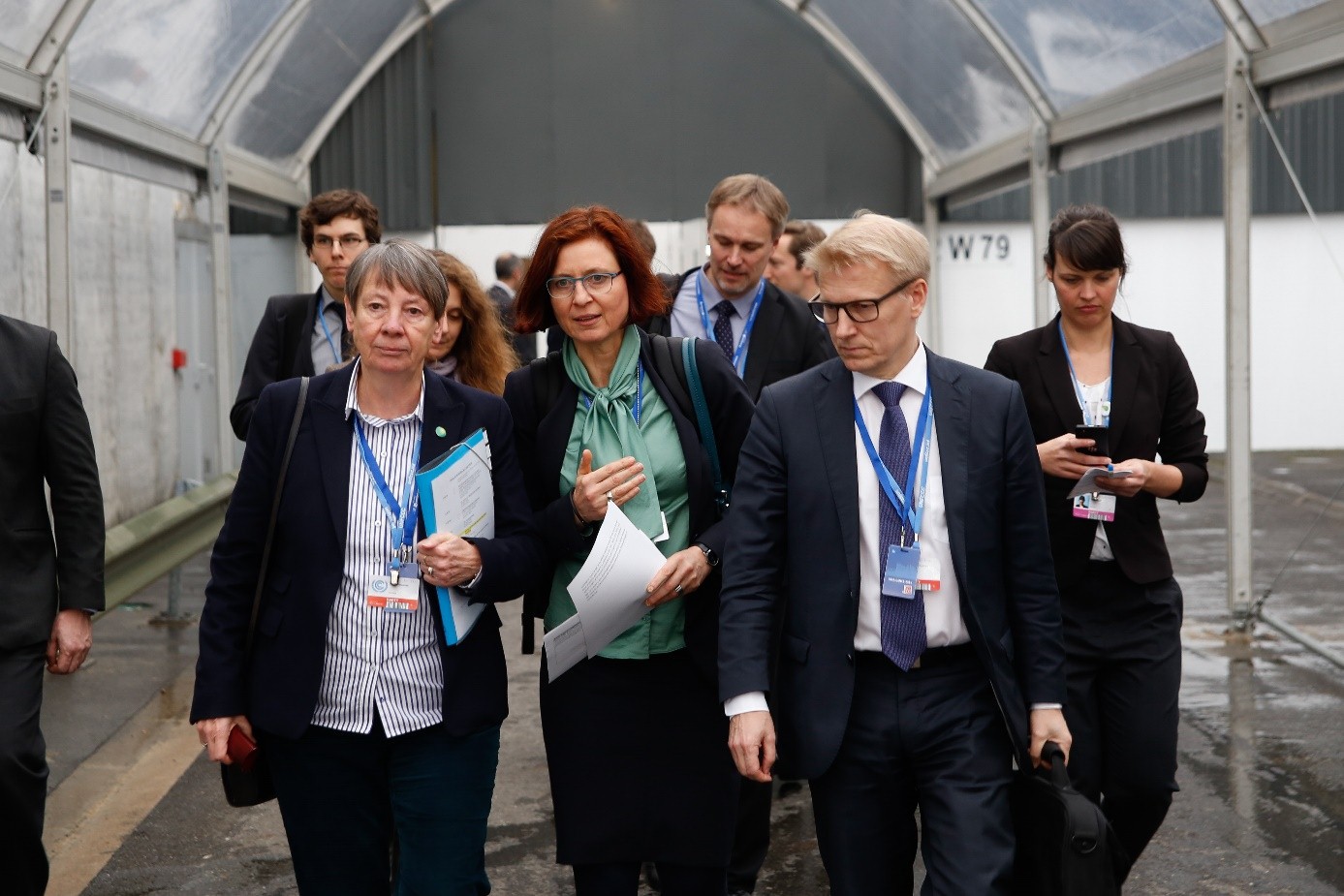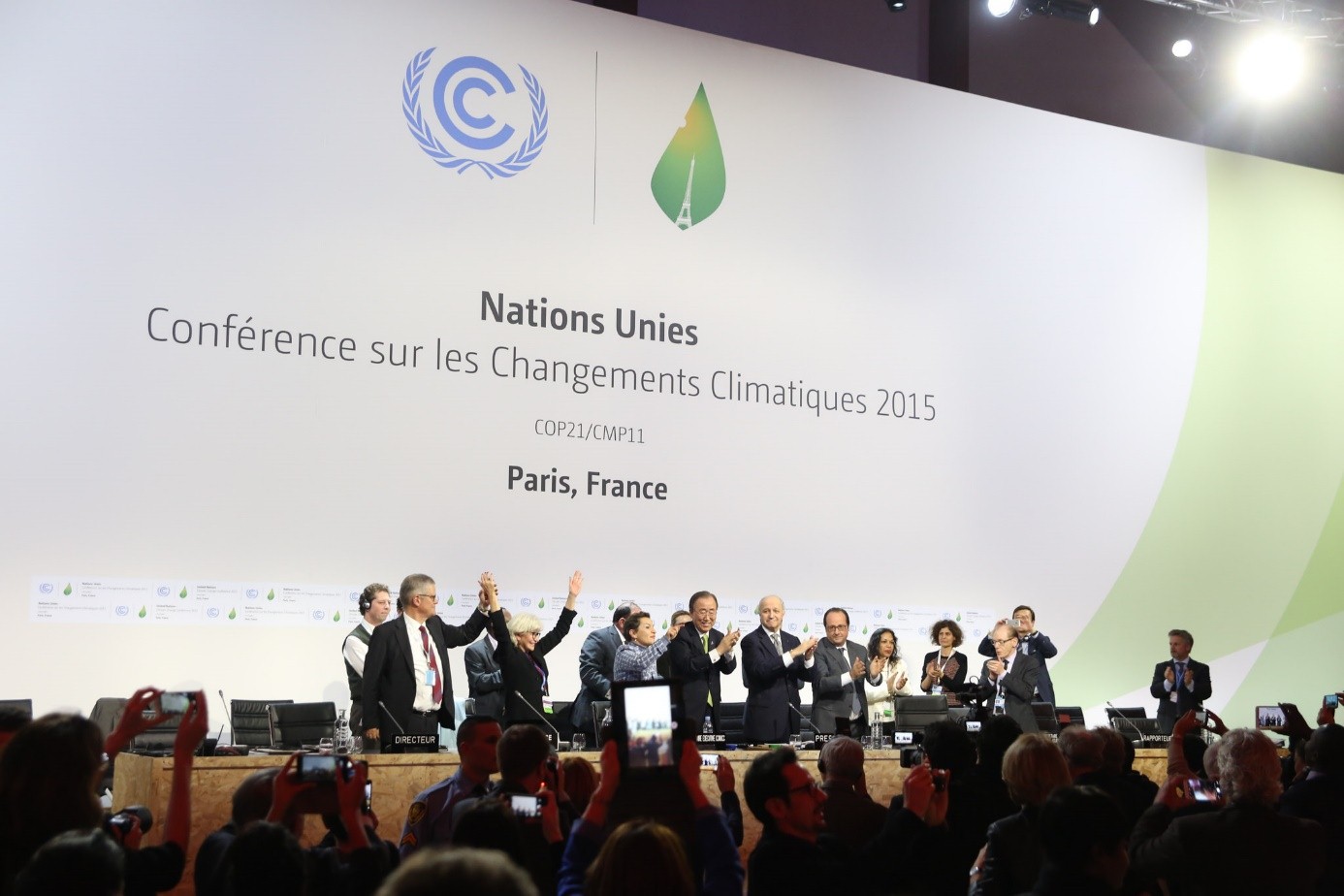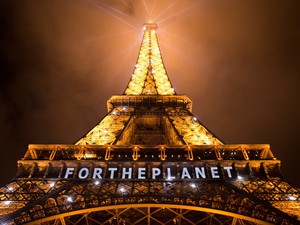Inside COP21: Summary by Michael Schneider, GCE Student
2016-01-21
In December the 21st Conference of the Parties (COP) of the United Nations Framework Convention on Climate Change (UNFCCC) took place. As a consequence, the global community reached a new global climate agreement. Due to his internship at the Federal Ministry for Environment, Nature Conservation, Building and Nuclear Safety, Michael Schneider, a student of Global Change Ecology, was member of the German delegation in Paris.From the November 30 until December 12, 2015, the 21st Conference of the Parties (COP) of the United Nations Framework Convention on Climate Change (UNFCCC) took place in Le Bourget, a suburb of Paris. The 196 parties headed for a new global climate agreement as a follow up of the Kyoto Protocol. In 2009, such an attempt was already made in Copenhagen – but it failed. As one consequence, the French presidency invited all the Heads of States to the beginning of the Conference and not to its end – this was perceived as one obstacle in Copenhagen. The speeches were thus intended to generate momentum and to guide the negotiations rather than to delay or even smash them. Afterwards, the technical negotiations began and in the second week, the countries’ environmental ministers or ministers of foreign affairs took over.
Luckily, I, Michael Schneider, student of the elite study programme Global Change Ecology, had the opportunity to be part of Paris and the negotiations. As a component of my internship at the Federal Ministry for Environment, Nature Conservation, Building and Nuclear Safety I had the possibility to follow the negotiations as a member of the German delegation. In the beginning, I was the assistant of the German Head of Delegation, Nicole Wilke, who has also been one of the Lead Negotiators of the European Union. Moreover, I had several administrative tasks. Due to the takeover of the negotiations by the ministers, I became the coordinator of a support unit of the European Union for the German federal minister Barbara Hendricks and her Finnish colleague Kimmo Tiilikainen.

In the negotiations, no member state of the European Union speaks for itself, but the European Union speaks on behalf of its 28 member states. Following this, the German and the Finnish minister assumed the responsibility for the EU in the negotiations in one of the four spin off groups existing at this point on differentiation and transparency. As the ministers simply cannot have a complete overview over all important aspects on this issue and cannot know every detail regarding the current drafts in the agreement, such support units are inevitable. The support unit compiles the preparations for the different rounds of negotiations and for bilateral meetings with other parties. As the coordinator of the support unit my tasks were, for example, to organise these bilateral meetings, to inform the different Lead Negotiators and other important people of the European delegations about the current state of the negotiations and of the work on our issue and to take part in the preparations as well as several further coordinative tasks.
In the course of the conference, as the different negotiating tracks converged again, I was analysing the new drafts of the agreement with some colleagues of the German delegation. Within only a few hours before continuation of the new negotiation rounds, it had to be worked out which passages would have to be revised, where red lines are crossed, where changes are necessary and what has to remain in the text and hence to be defended. Due to these tasks I could get a deep insight into the negotiations and the issues itself. Furthermore, I was very happy to be able to take part in this significant conference and to have been given responsibility in order to contribute a tiny part.

All in all, we can commemorate the conference as a success. It has been achieved what was reachable. Concerns of a minimalistic compromise did not become reality. The disputes between the countries could be settled. As the negotiations are based on the Rio Convention of 1992, the agreement needs to be guided by the convention. However, the annexes of the convention only differentiate between industrialised and developing countries, which is not transferable to the circumstances today. As a consequence, it was necessary to find a compromise to demand efforts from all countries within the scope of the common but differentiated responsibilities and respective capacities – a guiding principle of the convention. Regarding mitigation, this translates into the obligation for all countries to prepare, maintain and implement nationally determined contributions (NDCs) to reach the global long term goal. This means that the global community intends to limit global warming to well below 2°C and pursue efforts to limit the temperature increase to 1.5°C above pre-industrial levels. This requires rapid reductions of emissions and quickly reaching the peak of the global emissions of greenhouse gasses (GHG), followed by a net balance of sources and sinks of GHG in the second half of the century. As part of this endeavour, the complete electricity and energy sector will have to be decarbonized until mid-century. To achieve this, the NDCs need to be updated and be raised in ambition every five years as well as be guided by the global stocktake of the parties’ aggregate efforts taking place just before.
The agreement acknowledges adaptation to the already existing impacts of climate change as a pillar equal to mitigation. Accordingly, resilience has to be strengthened and vulnerability to climate change reduced. Loss and damages due to extreme weather events or sea level rise are also recognised as a separate topic. Logically, all these efforts require support for the most vulnerable countries as well as for the countries with least capacities. Consequently, developed countries are obliged to provide financial means for implementation in these countries. But also other countries are encouraged to make voluntary contributions. Besides, support will also be offered by technology development and transfer, as well as capacity building. Moreover, transparency is going to be an important column for the implementation of obligations. Finally, there is also a mechanism for compliance which has a facilitative character and is not based on sanctions.
Summing up, it is appreciable that the 196 parties could agree on this outcome. It is, however, clear that the Paris Agreement will not solve the problem of climate change. This is simply not possible due to the many different interests of countries. Much depends on the actions that will be started and achieved in the coming years and how seriously countries take the agreement and their promises. For example, it will be unavoidable to put an adequate price on carbon to enable the transition towards a climate-friendly and climate-resilient future. Nevertheless, Paris sends a promising message after the grievous terror attacks. The decision is a signal to the global economy and societies that the fossil era needs to come to an end. Moreover, the agreement is a victory for multilateralism, which gives a lot of hope in a time of many conflicts and uncertainties.
Origin of photo material: BMUB/Sascha Hilgers


